The Dark Side of Nursery Rhymes Revealed
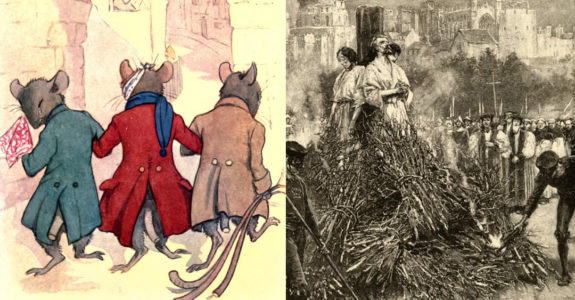
Nursery rhymes. The name itself seems to recall a simpler and more innocent time. Maybe you remember chanting a nursery rhyme on the playground with your friends as a kid. Then again, maybe, you don’t. The odds are you didn’t grow up in the 1800s and spend your time singing and dancing with a bunch of chimney sweeps (many of whom developed cancer of the ball sack because of the work they performed).
Even if you don’t happen to be a chimney sweep the chances are that you probably know a few nursery rhymes. You may not, however, know just what they were about. It turns out that a lot of nursery rhymes aren’t exactly kid-friendly and some aren’t even that adult-friendly either. So let’s go find out what’s happening to London Bridge and Ring Around the Rosie and a few of these other old-timey earworms… if you dare.
London Bridge Is Falling Down

The real question here is “why is London Bridge falling down?” in the nursery rhyme. It could be due to regular old wear and tear or even a Viking attack that took down the bridge in the early 1000’s.
The most disturbing theory holds that London bridge was falling down because the builders didn’t appease the Gods with a sacrifice. According to legend, it wasn’t uncommon to bury children… errrr candy… in a bridge’s foundations to keep it upright. Case solved. London Bridge was falling down because the workers didn’t bury candy… alive… in its foundations.
Mary Mary Quite Contrary
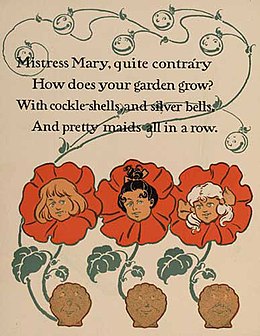
At first, this nursery rhyme sounds like a bit of gardening advice.
Person: Hey Mary? How does your garden grow?
Mary: With silver bells and cockleshells….and pretty maids all in a row.
Wait what? What are maids doing in a garden? Why are they in a row? Spoiler alert. This isn’t a garden at all. It’s a graveyard and the Mary in the nursery rhyme is Queen Mary I, who was known as Bloody Mary.
Was she called Bloody Mary because she liked her steaks really rare? Maybe. More likely, however, she got her nickname for executing hundreds of her subjects for choosing a Catholicism-free brand of religion. It turns out that those silver bells and cockleshells aren’t all that innocent either. Instead of being pretty little trinkets to plop into a garden bed, they were actually instruments of torture.
Three Blind Mice

It’s safe to say that if you’re nicknamed Bloody Mary you’re going to get some bad press, and Mary must have really pissed off ye olde nursery rhyme makers back in the day.
The three blind mice in this rhyme are actually a group of Protestant bishops who attempted to overthrow the Queen and were burned at the stake as a reward. The most likely reason the mice are blind is probably a reference to how “blind” they were in thinking that they could try to overthrow someone called Bloody Mary and live. After all, it’s not like she was called “Have a Fruit Basket Mary.”
Here We Go Round the Mulberry Bush
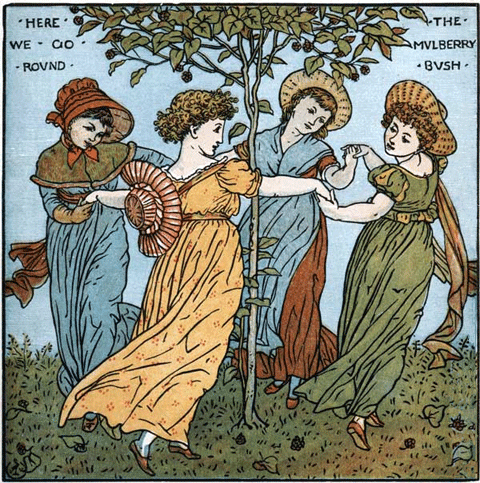
What’s so bad about walking around a bit of shrubbery? But also, what’s so great about it. Sure, people in the mid-1800s didn’t have the internet or fidget spinners, but this seems excessively mundane.
Then again maybe you’re forced to walk around the mulberry bush for exercise like the female prison inmates in this nursery rhyme. This was typically done by the light of the moon. Such fun.
Ring Around the Rosie
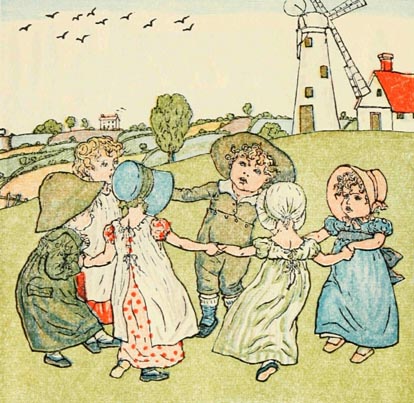
A common theory about this little ditty is that it refers back to the bubonic plague that ravaged London. One common feature of the cheerily-named Black Plague was a ringed rash or “rosie” that could erupt in buboes. What’s a bubo? Imagine a giant lump of flesh that finally bursts into a weeping sore. Then again don’t. Too late? Sorry.
In addition to being painful, buboes didn’t smell all that great which is why posies or other flowers were used to mask their scent and to ward off infectious “vapors.”
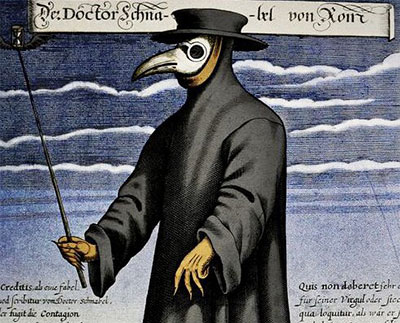
Whether or not they worked as an old-timey deodorant, posies weren’t that effective as an air sanitizer for the dreaded disease, which ultimately struck down as much as 30% of Europe. “Ashes ashes, we all fall down” comes either from the cremation of millions of diseased cadavers or it’s a reference to “ashes to ashes, dust to dust.”
Unfortunately, some buzzkill historian has come up with a more likely interpretation of this nursery rhyme and claims that it’s really about a religious ban on dancing. So apparently instead of singing about a dreaded disease, kids who chant “ring around the rosie” are really protesting a ban on dancing like the movie “Footloose,” but way more OG.
Humpty Dumpty
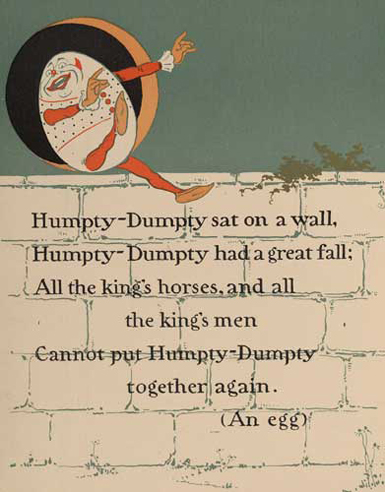
Some people think that the Humpty was just an average town drunk. After all what’s more appropriate than small child chanting a rhyme about a drunk who falls off of a wall and then breaks his skull?
Another theory holds that Humpty is actually King Richard III. The “Humpty” part refers to the belief that Richard had a humpback, though it was actually scoliosis. The King did not, however, inspire the early-90s hip hop sensation “The Humpty Dance” by Digital Underground.

The great fall that Humpty took was really a tumble that Richard took off of his horse which was, unfortunately for the king, during a battle. After finding himself on the ground, Richard was quickly chopped to bits by his enemies, and all the kings’ men couldn’t put him back together again.
Whether it’s about a town drunk or a humpbacked king there’s no interpretation of this nursery rhyme that feels all that child-friendly.
Georgie Porgie Pudding and Pie
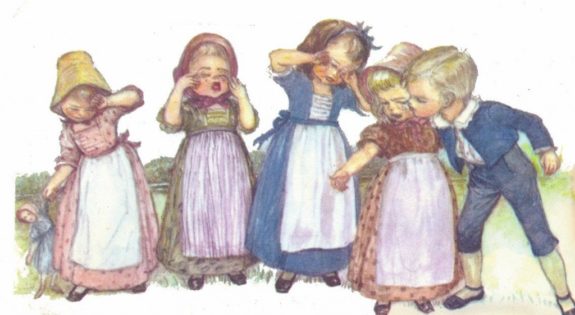
Georgie Porgie is thought to be George Villiers (1592–1628), a man with a big appetite for pudding and pie…and sex. According to history, George was stunningly attractive and used his good looks to hump his way through a large part of England.
In addition to being the rumored lover of King James I, George also “had relations” with a lot of women as well. Unfortunately for Georgie many of those women were married and their husbands weren’t all that excited about them being “Porgied” which is probably why he ran away when the boys came out to “play.”
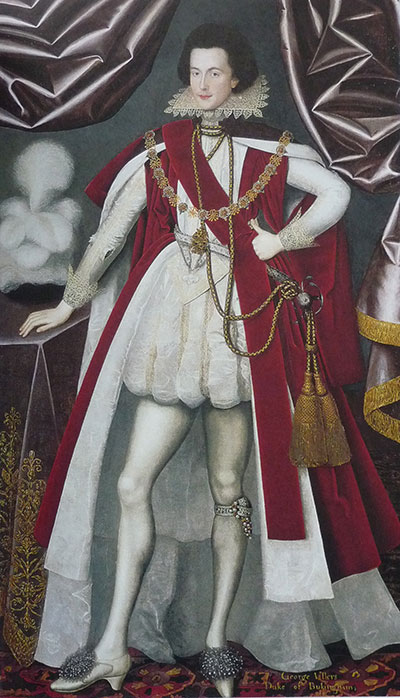
—
Let’s take a look at what a nursery rhyme might look like today:
Jeff the Chef loved
his fresh guests,
He invited them in and
they all lost their heads.
Jeff the Chef didn’t
have enough beds,
So he had to make room
in all his ice chests.
So yeah. That was a nursery rhyme about Jeffrey Dahmer.
Now that you know the secret history of these olden tunes, a little piece of your childhood is probably dead, or buried alive in a bridge. Sorry about that but, on a lighter note, Cardi B singing about WAP doesn’t seem all that bad now, does it?




